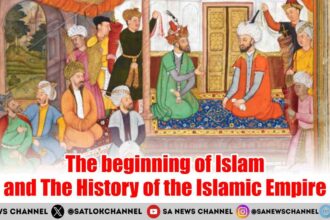The Tudor Period: The Tudor dynasty ruled England from 1485 to 1603, spanning the reigns of five monarchs: Henry VII, Henry VIII, Edward VI, Mary I, and Elizabeth I. Emerging in the aftermath of the Wars of the Roses, the Tudors ushered in an era marked by profound political consolidation, dynastic stability, and sweeping religious change. Central to this transformation was the English Reformation under Henry VIII, which permanently altered the nation’s relationship with the Catholic Church and redefined the monarchy’s authority.
- Origins of the Tudor Dynasty
- Henry VII’s Consolidation of Power
- Government and the Machinery of Rule
- Henry VIII and the Early Years of Splendor
- The King’s Great Matter and the Break with Rome
- Dissolution of the Monasteries and Social Upheaval
- Law, Parliament, and the Tudor State
- Edward VI and the Push to Protestantism
- Mary I and the Catholic Restoration
- Elizabeth I and the Religious Settlement
- Foreign Threats, the Armada, and Naval Power
- Exploration, Trade, and the First Overseas Ventures
- Economy, Prices, and Everyday Strain
- Culture, Learning, and the Arts
- Wales, Ireland, and the Edges of the Realm
- Scotland, Diplomacy, and the Succession Question
- Court, Patronage, and the Politics of Favor
- Law, Order, and the Social Fabric
- The 1590s: Famine, War, and Resilience
- The End of the Dynasty and the Union of Crowns
- What Made the Tudor Century Distinct
- Lasting Footprints in Church and State
- Sources, Debates, and Evolving Scholarship
- Spiritual Perspective:
- Religious Upheaval in the Tudor Period and the True Path to Salvation According to Chyren Saint Rampal Ji Maharaj
- FAQs based on the history of the Tudor period:
The period also saw significant developments in governance, exploration, culture, and the economy, laying foundations for England’s rise as a European power. The dynasty concluded with the death of Elizabeth I in 1603, whose lack of an heir brought about the peaceful succession of the House of Stuart, uniting the crowns of England and Scotland under James VI of Scotland, now James I of England.
Origins of the Tudor Dynasty
The Tudor story begins on the battlefield at Bosworth on 22 August 1485, when Henry Tudor defeated Richard III and ended the Wars of the Roses. Henry VII’s claim combined Lancastrian descent with a calculated marriage to Elizabeth of York, uniting rival houses. His first priority was stability: extinguish competing claims, display royal magnificence without overspending, and present a lawful, providential monarchy. He backdated his reign to the day before Bosworth to brand enemies as traitors, secured papal approval for his marriage, and cultivated an image of a reconciler, while quietly building systems that would keep challengers at bay.
Henry VII’s Consolidation of Power
To neutralize magnates who had made and unmade kings, Henry VII tamed the nobility with bonds and recognizances—legal instruments that tied great lords to good behavior through hefty financial penalties. He prodded Parliament to confirm his title and passed acts of attainder against the most dangerous opponents. The Council Learned in the Law enforced royal rights and wardships, generating revenue and control. Foreign treaties, Medina del Campo with Spain and Étaples with France, brought dowries and pensions. Careful bookkeeping, audited personally, rebuilt solvency after decades of turmoil and allowed the crown to act without constant parliamentary taxation.
Government and the Machinery of Rule
The Tudor government fused medieval household structures with increasingly formal institutions. The royal council evolved into specialized bodies such as the Star Chamber for judicial oversight and later the Court of Requests for cheaper justice. The Exchequer remained, but the king’s Chamber under Henry VII managed much revenue directly for speed and discretion. The Privy Chamber around the monarch became a gatekeeping force, shaping access and patronage. This growing bureaucracy, staffed by lawyers and administrators, professionalized governance while keeping ultimate authority close to the sovereign’s person, a hallmark of Tudor kingship throughout the sixteenth century.
Henry VIII and the Early Years of Splendor
When Henry VIII inherited the throne in 1509, he was young, educated, and ambitious. His early reign reveled in chivalric display, tournaments, and campaigns against France and Scotland. Advisors like Thomas Wolsey rose by delivering victories and negotiating prestige diplomacy, exemplified by the Field of Cloth of Gold in 1520. Yet military triumphs were costly and episodic. The king’s desire for a male heir and his complex marital politics would soon overshadow pageantry. The dynastic imperative, securing succession, drove decisions that reshaped law, religion, and the relationship between England and the wider Catholic world.
The King’s Great Matter and the Break with Rome
Henry VIII’s request to annul his marriage to Catherine of Aragon set him against papal authority. After years of legal wrangling failed to produce a favorable ruling, Thomas Cromwell engineered a legislative route: Parliament recognized the king as Supreme Head of the Church of England through the Acts of Supremacy (1534) and Restraint of Appeals, severing final recourse to Rome. Oaths enforcing loyalty tested consciences, and high-profile refusals, Sir Thomas More and Bishop John Fisher, ended at the scaffold. The change was political as much as theological, asserting national sovereignty in spiritual affairs and redirecting ecclesiastical revenues toward the crown.
Also Read: The history of the Ming Dynasty (1368–1644): Power, Prosperity, and Decline in Imperial China
Dissolution of the Monasteries and Social Upheaval
Cromwell’s visitation of religious houses and subsequent dissolutions transformed England’s landscape. Monastic wealth, lands, and art were seized; chantries later followed. Some funds bolstered defenses and royal projects, but much property was sold to gentry and merchants, widening the landowning class and entrenching Reformation interests. The closures disrupted almsgiving, education, and local employment, provoking unrest such as the Pilgrimage of Grace in 1536–37. Although suppressed, the revolt revealed deep regional and religious anxieties. Architectural losses were immense, while new schools and cathedrals founded from former monastic income signaled a reconfigured ecclesiastical and civic order.
Law, Parliament, and the Tudor State
The break with Rome elevated Parliament’s stature as the vehicle for transformational policy. Statute law codified supremacy, treason definitions, and doctrinal positions. Successive reigns used parliamentary authority to legitimize succession changes, taxation, and religious resets. The Council and regional bodies, the Council in the North, the Council of Wales and the Marches, extended reach into distant counties. Justices of the Peace anchored local governance, enforcing poor laws and social regulation. Though the crown remained personal and powerful, the Tudor habit of legislating through Parliament strengthened the idea that national change required statutory consent, a precedent with lasting constitutional effects.
Edward VI and the Push to Protestantism
Edward VI’s short reign (1547–1553) accelerated Protestant reforms. Under regents Somerset and later Northumberland, the Church of England adopted an English liturgy, first through the Book of Common Prayer (1549), then in a more clearly Protestant 1552 edition. Images were removed, altars replaced with communion tables, and clerical marriage permitted. Social tensions flared: the Western Rebellion resisted liturgical change, while Kett’s Rebellion in Norfolk exposed rural grievances over enclosure. Edward’s fragile health and the political attempt to place Lady Jane Grey on the throne in 1553 underscored how confessional change and dynastic insecurity were tightly intertwined.
Mary I and the Catholic Restoration
Mary I reversed her half-brother’s policies, restored papal obedience, and reinstituted Catholic worship. Her marriage to Philip of Spain, intended to secure an heir and continental support, stirred xenophobic fears and political opposition. The Marian burnings of Protestants, including bishops Hugh Latimer, Nicholas Ridley, and Archbishop Thomas Cranmer, aimed to deter heresy but instead forged Protestant memory of persecution. A disastrous loss of Calais in 1558 weakened national pride. Yet Mary’s reign also saw administrative competence in revenue reform and naval investment, laying groundwork her sister would later use. Her early death left the religious question unresolved.
Elizabeth I and the Religious Settlement
Elizabeth I’s accession in 1558 brought a pragmatic settlement. The 1559 Acts of Supremacy and Uniformity reasserted royal supremacy and established a moderately Protestant Church with a revised Book of Common Prayer. The via media balanced ceremony with reformed doctrine, enforced by fines for recusancy but tempered by caution. Puritans sought further reform; Catholics, encouraged by papal excommunication in 1570, sometimes looked to foreign powers. Elizabeth managed tensions through careful patronage, a sophisticated intelligence network under Francis Walsingham, and selective persecution of plots. The Settlement’s durability owed much to her insistence on outward conformity and political stability.
Foreign Threats, the Armada, and Naval Power
Anglo-Spanish rivalry escalated with English support for Dutch rebels and privateering against Iberian treasure fleets. In 1588 Philip II launched the Spanish Armada to escort an invasion. English ships, favoring maneuverability and gunnery, harried the larger fleet up the Channel before storms and supply problems compounded Spanish losses. The victory did not end war, but it boosted national confidence and maritime ambitions. Follow-up expeditions were mixed, yet permanent naval investment grew. Coastal defenses, improved dockyards, and a cadre of experienced captains signaled a strategic shift toward sea power that would shape England’s future reach.
Exploration, Trade, and the First Overseas Ventures
Elizabethan England probed the Atlantic world through chartered companies and bold private initiatives. The Muscovy Company opened northern routes; the Levant Company connected to the Ottoman markets; the East India Company received its charter in 1600, setting a commercial template for later expansion. Humphrey Gilbert and Walter Raleigh attempted colonies at Newfoundland and Roanoke, experiments that failed yet seeded colonial thinking. Privateering blurred lines between commerce and war. Maps, navigational texts, and ship design improved. While modest compared to Iberian empires, Tudor-era ventures created commercial networks and institutional models that the seventeenth century would develop aggressively.
Economy, Prices, and Everyday Strain
The sixteenth century saw population growth after late medieval lows, driving up demand for grain and fuel. Coinage debasements under Henry VIII and Edward VI aggravated inflation; landlords shifted from customary rents to market terms; enclosure advanced pasture at the expense of open fields. The “price rise” pinched wage earners and fueled vagrancy concerns. Tudor governments responded with poor laws, culminating in the 1598 and 1601 statutes that organized parish relief and laid administrative foundations for early modern welfare. Harvest failures, most notably in the 1590s, tested communities, but local governance and charity mitigated the worst effects.
Culture, Learning, and the Arts
The Tudor period fostered a cultural flowering. Humanist scholarship reshaped education through grammar schools and universities, emphasizing classical languages and rhetoric. The printing press multiplied vernacular Bibles, chronicles, and polemics. Court and city patronage nurtured music, portraiture, and drama. Composers like Thomas Tallis and William Byrd bridged confessional divides with enduring works; painters such as Hans Holbein and later Nicholas Hilliard defined an iconography of power and refinement. By the 1590s, public theaters thrived with playwrights including Christopher Marlowe and William Shakespeare, whose histories and tragedies engaged living debates about authority, legitimacy, and national identity.
Wales, Ireland, and the Edges of the Realm
The Tudors consolidated authority beyond England. In Wales, the Laws in Wales Acts (1536–1543) integrated administration, law, and parliamentary representation, extending English legal structures. Ireland posed sharper challenges. The crown’s authority was strongest in the Pale around Dublin, but Tudor monarchs pursued plantation and military campaigns to subdue Gaelic lords and recalcitrant Old English elites. Rebellions under Shane O’Neill, the Desmonds, and later Hugh O’Neill culminated in the Nine Years’ War. The conflict’s brutality and scorched-earth tactics foreshadowed seventeenth-century plantation schemes, reshaping landholding and deepening cultural and confessional divisions.
Scotland, Diplomacy, and the Succession Question
Relations with Scotland oscillated between war and treaty. Flodden (1513) killed James IV and many nobles; later, the “Rough Wooing” sought a marriage between Edward VI and Mary, Queen of Scots, but produced devastation rather than union. Mary’s claim to the English throne made her a focal point for Catholic hopes; after her forced abdication and flight to England, she became a prisoner whose presence fueled plots. Elizabeth resisted naming a successor to avoid factionalism, but by the 1590s James VI of Scotland emerged as the likely heir, a diplomatic recognition that prepared the way for the 1603 union of crowns.
Court, Patronage, and the Politics of Favor
Tudor politics ran in favor. Access to the monarch through the Privy Chamber or principal secretaries determined careers. Noble power persisted, but service, learning, and administrative skill created pathways for “new men” like Wolsey, Cromwell, Cecil, and Walsingham. Factional rivalries, conservative vs. reformist, militant Protestant vs. moderating pragmatist, played out in council, Parliament, and court entertainments. The queen’s unmarried status allowed Elizabeth to use marriage diplomacy without commitment, balancing suitors and allies. The theater of power, progresses, tilts, masques, projected authority while binding elites to the crown through spectacle, offices, and carefully distributed rewards.
Law, Order, and the Social Fabric
Tudor rulers prized order. Statutes regulated dress, alehouses, apprenticeships, and wages. Justices of the Peace, drawn from local gentry, enforced statutes and mediated disputes, embodying the partnership between crown and counties. The Reformation rechanneled charitable provision from monasteries to parishes and guilds; grammar schools proliferated as pious endowments sought new outlets. Witchcraft prosecutions existed but were fewer than on the continent; social discipline relied more on church courts and communal reputations. The household remained the core unit of production and authority, with patriarchal norms challenged only at the margins by urban migration and economic change.
The 1590s: Famine, War, and Resilience
Elizabeth’s later years were turbulent. Bad harvests in 1594–1597 brought dearth; the Irish war drained coffers and manpower; the Earl of Essex’s failed Irish campaign and rash London rising in 1601 exposed cracks in court politics. Yet the state proved resilient: tax collection improved, the navy remained credible, and Parliament, despite quarrels, granted subsidies. The 1601 Poor Law organized parish relief more coherently. Literary culture reached new heights, and artisanship flourished. By the time Elizabeth died in March 1603, England had weathered strain without a return to civil war, a testament to institutional endurance built over the Tudor century.
The End of the Dynasty and the Union of Crowns
Elizabeth left no direct heir. James VI of Scotland, great-grandson of Henry VII through Margaret Tudor, succeeded smoothly as James I of England. The crowns of England and Scotland were united in one person, though the kingdoms remained legally distinct. The transition validated decades of diplomatic positioning and confirmed that stability, not merely blood, was the core Tudor bequest. Administrative routines, a national church with defined settlement, and a habit of governing through statute passed into the Stuart era, ready to be tested by new religious and political conflicts in the seventeenth century.
What Made the Tudor Century Distinct
The Tudor period stands out for the fusion of personal monarchy with institutional growth. Kings and queens still ruled through presence and charisma, but they increasingly relied on statute, councils, and literate administrators. Religious change did not follow a single arc; it seesawed, leaving a Protestant state with English liturgy and episcopal structure. Economic shifts redistributed land and opportunity, while hardship bred new social policies. Maritime horizons widened, and culture translated political drama into enduring art. The result was a realm more centralized, legally self-conscious, and outward-looking than the fractured kingdom Henry VII inherited.
Lasting Footprints in Church and State
By 1603, the English church had a distinctive identity: scripture and preaching prioritized, sacraments reduced to two for most purposes, bishops retained, and parish life ordered by a uniform prayer book. The crown’s supremacy in ecclesiastical matters remained a defining principle, even as later Stuart debates challenged its scope. Parliament’s expanded role in major changes, from supremacy to poor relief, embedded a legislative habit that sharpened constitutional expectations. The gentry’s rise, fueled by land purchases from dissolved estates, created a political class central to county administration and later national conflict, shaping English governance well beyond the dynasty’s end.
Sources, Debates, and Evolving Scholarship
Modern scholarship sifts financial accounts, parish registers, court records, letters, and visual sources to refine the picture. Historians debate Cromwell’s intentions, the depth of popular Protestantism, the nature of the “mid-Tudor crisis,” and how far Elizabeth’s settlement reflected conviction or calculation. Economic historians analyze price data and demographic trends to explain unrest and policy. Cultural historians read plays, music, and portraiture as political texts. While interpretations shift, the broad contours hold: the Tudors presided over decisive transformations in religion, statecraft, economy, and culture that reoriented England toward the Atlantic and prepared the ground for later imperial and constitutional developments.
Spiritual Perspective:
Religious Upheaval in the Tudor Period and the True Path to Salvation According to Chyren Saint Rampal Ji Maharaj
The Tudor period (1485–1603) was marked by intense religious upheaval, with England oscillating between Protestantism and Catholicism under Edward VI, Mary I, and Elizabeth I. These frequent shifts caused political tension, social unrest, and spiritual confusion, showing that human-led religious changes cannot guide the soul to salvation.
Sant Rampal Ji Maharaj, a Chyren or Tatvdarshi Saint, teaches that true religion is devotion to the Supreme God, Kabir, and not rituals, ceremonies, or sects. Human life is precious because it alone offers the opportunity to attain liberation and escape the cycle of birth and death. Only the guidance of a true Satguru, like Sant Rampal Ji, can prevent the soul from sinking. To gain this spiritual knowledge and achieve eternal salvation, watch satsang’s of Sant Rampal Ji Maharaj on YouTube channel.
FAQs based on the history of the Tudor period:
1. What years does the Tudor period cover?
The Tudor period in England spans from 1485 to 1603, beginning with Henry VII’s victory at the Battle of Bosworth Field and ending with the death of Elizabeth I.
2. Who were the monarchs of the Tudor period?
The Tudor period included five monarchs: Henry VII, Henry VIII, Edward VI, Mary I, and Elizabeth I. Each played a key role in shaping England’s political, religious, and cultural landscape.
3. What was the English Reformation?
The English Reformation, initiated by Henry VIII, was a major religious shift that broke England away from the Catholic Church and established the Church of England with the monarch as its Supreme Head.
4. Why is Elizabeth I’s reign called the golden age?
Elizabeth I’s reign (1558–1603) is called the Elizabethan or golden age due to cultural flourishing, the defeat of the Spanish Armada, and relative political stability after decades of religious upheaval.
5. How did the Tudor period end?
The Tudor period ended with Elizabeth I’s death in 1603, as she left no heir. The crown passed to James VI of Scotland, beginning the Stuart dynasty in England.









